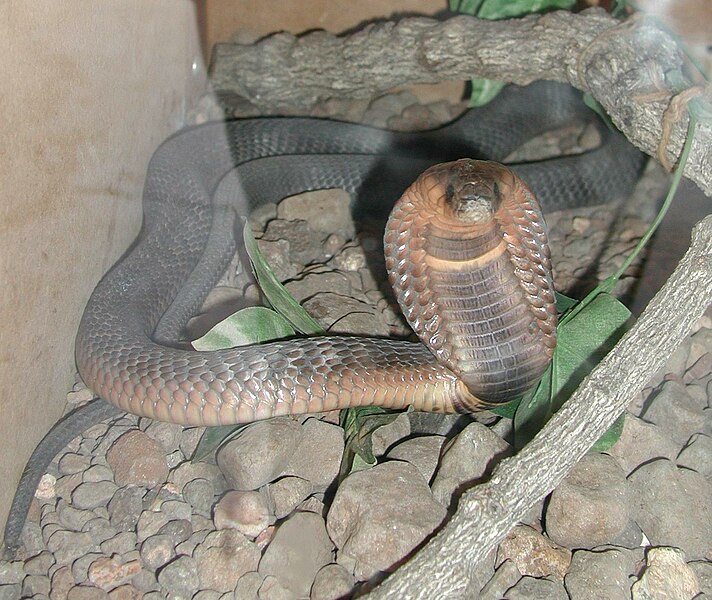 The herpetology world lost one of its oldest and most celebrated members with the passing of the legendary Bill Haast on June 15, 2011. Although surrounded by controversy for (literally!) most of his 100 years, Mr. Haast inspired millions of reptile enthusiasts, myself included, and saved countless lives by harvesting the venom needed to produce antivenin (the medicine used to treat bites from venomous snakes). He even donated his own blood, which he believed to contain antivenin, to snakebite victims (please see below). Read More »
The herpetology world lost one of its oldest and most celebrated members with the passing of the legendary Bill Haast on June 15, 2011. Although surrounded by controversy for (literally!) most of his 100 years, Mr. Haast inspired millions of reptile enthusiasts, myself included, and saved countless lives by harvesting the venom needed to produce antivenin (the medicine used to treat bites from venomous snakes). He even donated his own blood, which he believed to contain antivenin, to snakebite victims (please see below). Read More »
Category Archives: Venomous Snakes
Feed SubscriptionRecent Field Research – Unusual Snake and Frog Feeding Observations
Many interesting field research reports are published in professional journals such as Copeia, Herpetologica and Herpetological Review, and are not available on the internet. From time to time I’ll provide summaries of some of the fascinating articles that I come across. Today’s report, drawn from Autumn, 2010 publications, covers a favorite topic of mine – feeding records. As theses reports show, snakes and frogs often do battle – and the results are hard to predict!
Fer-de-lance and Smoky Jungle Frogs: Venom vs. Poison
In Costa Rica, a Fer-de-lance partially swallowed and regurgitated a Smoky Jungle Frog. The snake was rendered lethargic incapable of defending itself for at least 45 minutes (and would likely not repeat the experience!). Smoky Jungle Frogs produce Leptotoxin, a powerful chemical that causes rapid death from cardiac arrest when administered to rats. People have reported experiencing “tingling” sensations after handling Smoky Jungle Frogs. Read More »
Paradise and Ornate Flying Snakes – New Research and Notes on Captive Care
 Of all the gliding animals, Flying Snakes (Genus Chrysopelia) appear to me to be the most unlikely…they just don’t seem suited to moving through the air. Yet they do, and quite well – not matching the abilities of flying squirrels, but certainly right up there with gliding geckos and frogs. A recent study shed some light on their unique abilities, and suggests that they may serve as models for small, agile flying vehicles. Read More »
Of all the gliding animals, Flying Snakes (Genus Chrysopelia) appear to me to be the most unlikely…they just don’t seem suited to moving through the air. Yet they do, and quite well – not matching the abilities of flying squirrels, but certainly right up there with gliding geckos and frogs. A recent study shed some light on their unique abilities, and suggests that they may serve as models for small, agile flying vehicles. Read More »
Reputation Redeemed – Asp Cleared of Responsibility for Cleopatra’s Death
 A 2,000 year-old-legend holds that Cleopatra, famed last Queen of Egypt, committed suicide by allowing an Asp, or Egyptian Cobra (Naja haje), to bite her. A recent study at Germany’s University of Trier, however, has now called this story into question.
A 2,000 year-old-legend holds that Cleopatra, famed last Queen of Egypt, committed suicide by allowing an Asp, or Egyptian Cobra (Naja haje), to bite her. A recent study at Germany’s University of Trier, however, has now called this story into question.
Plant Poison or Snake Toxin?
By analyzing ancient Egyptian papyrus scrolls and a Roman historian’s account of Cleopatra’s demise, German toxicologists have concluded that a lethal mixture of plant poisons, and not a venomous snake bite, was the more likely suicide agent. Read More »
Snake Encounters – Training Dogs to Avoid Venomous Snakes
As reptile enthusiasts know, snakes are difficult to find. But dogs are very good at it, and as a consequence are bitten by venomous species more often than are their owners. Spring is prime hiking time, and also when snakes are most likely to be encountered while basking, seeking mates, or searching for meals after the long winter’s fast. The recent experience of one of our readers, whose Arizona property was frequented by Mojave Rattlesnakes, spurred me to look into the question of snake-dog interactions. Read More »
 That Reptile Blog – Reptile, Amphibian and Exotic Pet Care and Information
That Reptile Blog – Reptile, Amphibian and Exotic Pet Care and Information
